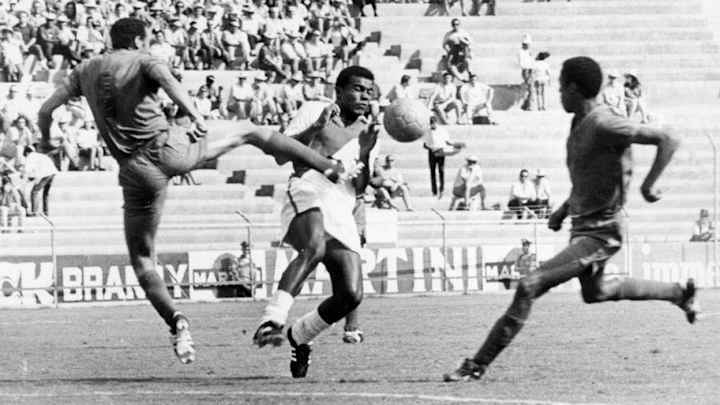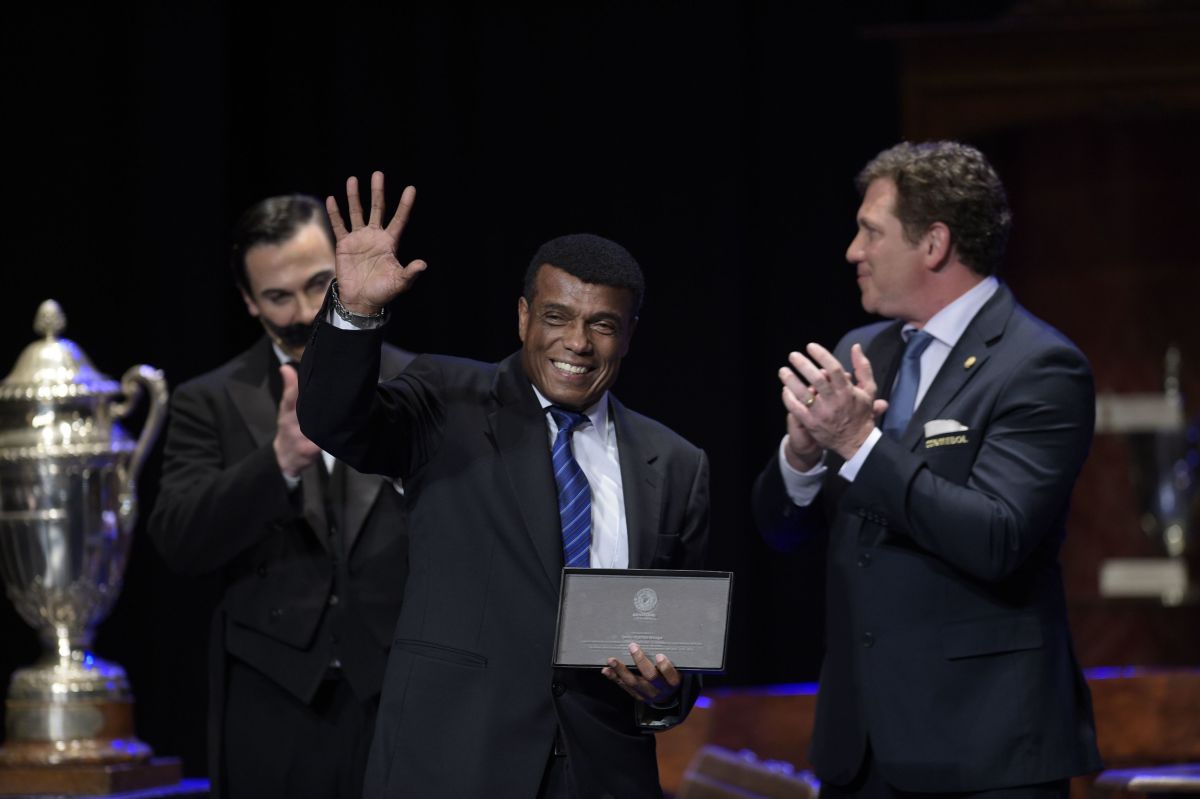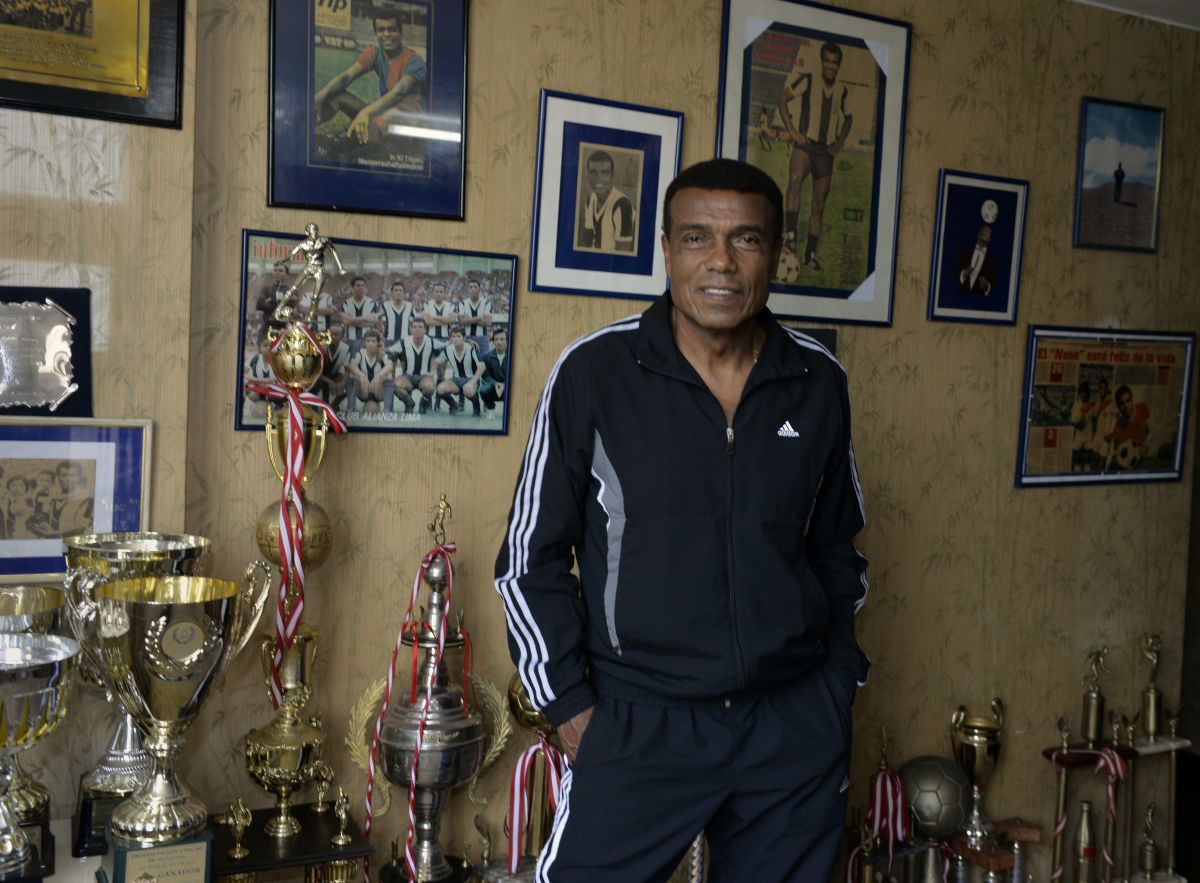World Cup Countdown: 12 Weeks to Go - The Story of Teofilo Cubillas, the Peruvian Pele

When Pele was celebrating his unprecedented third World Cup title in 1970, the superstar of a Brazil side that is still seen by many as the greatest team of all time, he was asked by journalists if he was planning to return in 1974. The legendary number 10 was only 29 years of age at the time, but he declared there and then that the World Cup chapter of his great career was over.
"But don't worry, because I have a successor and his name is Teofilo Cubillas" he said.
Cubillas was not another Brazilian, but the 21-year-old star of an exciting Peru team that Brazil had beaten en-route to glory. He had scored five goals in the tournament and remains one of only three players in World Cup history to have scored five or more in two different World Cups, alongside German pair Miroslav Klose (2002, 2006) and Thomas Muller (2010, 2014).

Born in the Peruvian capital, Lima, in 1949, Cubillas began playing football from a young age. A primary school teacher would regularly take the youngster and his classmates to a nearby pitch and spend hours in goal as the children tried to score.
By the age of 16, Cubillas had made his professional debut for Alianza Lima in 1966 and finished that season as top scorer of the Peruvian Primera Division with 19 goals. He was not even a striker by trade, but an attacking midfielder. He was also not big in physical stature, nor would he become so, but he was an intelligent player blessed with speed of mind, and of feet.
"He was a quick thinker and quick on the ball too. There you were trying to guess what he'd do and he'd already done it." former Peru international German Leguia told FIFA.com in 2011.
Two years after his club debut at 16, 18-year-old Cubillas, nicknamed 'Nene' or 'The Baby' by an Alianza colleague on his first trip overseas - the teammate had jokingly asked an air stewardess to fetch the teenager a glass of milk - made his international bow for Peru.
Happy 69th birthday to the legend of Peruvian football.
— The Peruvian Waltz (@PeruWaltz) March 8, 2018
“Cubillas is not the Peruvian Pele… Pele is the Brazilian Cubillas.” pic.twitter.com/eTKbd7X5iX
At that time, Peru hadn't been to a World Cup since 1930 and had never actually qualified for the tournament, having been invited to play in that inaugural competition in Uruguay. But with Cubillas fast emerging as a star and the team managed by Didi, a two-time World Cup winner with Brazil in 1958 and 1962 who employed a free flowing 4-2-4 formation, Peru were back on the global stage for the first time in 40 years when they made it to the finals in Mexico.
Peru had secured their place at the tournament by pulling off what is now remembered as one of South American football's all-time great upsets. A 2-2 draw in Buenos Aires' famed La Bombanera stadium, was enough to finish top of their three-team qualifying group at the expense of Argentina. To this day, that remains the last time an Argentina side failed to qualify for the finals.
As a country, Peru rather ambitiously felt it could win the World Cup. Political changes and socio-economic reform in the late 1960s had created a new national pride and the nation was free of the kind of right-wing dictatorship that afflicted many of its South American neighbours.
With Cubillas, a player of black African heritage, star winger Hugo Sotil of native Indian heritage and others representing the various ethnic groups of Peruvain society, this was a team that reflected 1920s author Jose Carlos Mariategui's vision of a modern Peru where African, Indian and Spanish populations and their culture could co-exist.

Peru were drawn into a group with West Germany, finalists four years earlier in 1966, Bulgaria and Morocco, Africa's first World Cup representatives since Egypt in 1934.
But an earthquake just two days before Peru's opening game against Bulgaria left between 50,000 and 70,000 people dead and as many as 500,000 homeless. The tragedy back home threatened to unsettle the players and disrupt their World Cup dream before it had even started, especially as Bulgaria went 2-0 up shortly after half-time.
Goals from Alberto Gallardo and Hector Chumpitaz brought the scoreline back to 2-2, before Cubillas struck the winner with just under 20 minutes remaining. And that moment from his very first World Cup game is still his personal World Cup highlight.
"It was the opening goal against Bulgaria at Mexico 1970, a game we won 3-2 after going 2-0 down," the player himself told FIFA.com in 2010. "There'd been an earthquake in Peru just a few days earlier and we found out just before we went out to play that 50,000 people had died. Knowing that we'd brought a little bit of happiness to the country was a feeling that is impossible to put into words."
En tiempos de moda de las figuritas del álbum Panini, las tres presencias de Teófilo Cubillas en los Mundiales 🔴⚪️🔴 pic.twitter.com/LQzNPT0FUq
— Renzo Galiano (@RenzoGaliano) March 26, 2018
Cubillas then scored twice more as Peru beat Morocco 3-0 in their second game. It is worth noting that three days earlier West Germany had needed two late goals to beat the World Cup debutants after surprisingly going 1-0 down in the first half. Peru's final group game was against the Germans and Cubillas scored his fourth of the tournament, but it was consolation as they lost 3-1.
Two wins was still enough for Peru to progress to the knockout rounds, however. But in Brazil they would face an opposition that had won two of the last three World Cups and had blitzed a tough group containing England, Romania and Czechoslovakia.
Cubillas scored his fifth World Cup goal in that game, but Brazil were simply too strong and Peru too naive. In 'Golazo: A History of Latin American Football', author Andreas Campomar writes, 'The 4-2 scoreline flattered the Peruvians, whose attacking vivacity could not make up for defensive frailties.'
"We played against Brazil in that tournament and they ended up winning the World Cup. I think that maybe if we'd played a different opponent, we could have advanced a lot further," Cubillas told FIFA TV in 2018.
"We'd also played against Germany and Bulgaria. It was a wonderful World Cup, though, and I remember it with great affection."
1970 World Cup
— The League Magazine (@Theleaguemag) June 11, 2016
Brazil v Peru
Teofilio Cubillas shoots pic.twitter.com/bil3YfnYyZ
After 1970, Peruvian football blossomed. Cubillas, named South American Footballer of the Year ahead of his idol Pele in 1972, made the switch to Europe in 1973, playing for Basel in Switzerland and later enjoying a prolific spell with Porto. Sotil, meanwhile, became a team-mate of Johan Cruyff at Barcelona and scored 10 goals en-route to La Liga glory in 1973/74.
It was therefore a disappointment when Peru missed out on the 1974 World Cup in West Germany, losing a one off playoff against Chile on neutral soil in Uruguay. But in 1975, Cubillas inspired Peru to glory in the new Copa America. It was Peru's first continental triumph since the 1939 South American Championship and Cubillas was named best player. That Brazil had sent a weakened side and Argentina selected a number of young and inexperienced players is largely irrelevant.
Eight years after that initial effort, Cubillas and Peru returned to the World Cup in 1978 after a mixed qualifying campaign. There were some who thought that Cubillas was too old at 29 to make an impact. Sotil, meanwhile, was 32 and Chumpitaz, another veteran from 1970, was 34. But Peru made a flying start to the group stage when Cubillas tore a strong Scotland side to shreds, scoring twice.
1970s - Teofilo Cubillas scored twice as Peru beat Scotland 3-1 in Cordoba at the 1978 World Cup #Groupstage pic.twitter.com/5mZzy2DL0h
— Michael Frijj (@frijj_0) April 4, 2015
Four days later, Peru drew 0-0 against the mighty Netherlands, albeit without Cruyff, before hammering Iran 4-1 in their final game. Cubillas scored a hat-trick in that contest, taking his tally for the tournament to five for the second time in his career.
Differing from the conventional knockout rounds that had been seen at every World Cup since 1954, the 1978 tournament utilised a second round robin group stage for the final eight teams, with the winners of each four-team group to contest the final.
Paired with Argentina, Brazil and Poland, Peru simply fell apart. They were beaten 3-0 by Brazil and 1-0 by Poland, before being hammered 6-0 by Argentina in the last fixture, a game that many conspiracy theorists continue to believe was fixed as the hosts could only reach the final if they won by at least four goals. Accused of throwing the game, Peruvian players have always denied it. Fatigue, as Cubillas has alluded to, is also a strong argument for the collapse.
José Velasquez, ex jugador peruano afirma que Rodulfo Manzo, Raúl Gorriti, Juan José Muñante y Ramón Quiroga se vendieron durante el històrico 6-0 de Argentina a Perù en 1978. pic.twitter.com/7BKzcF2P6h
— "Pachi" Coronado únicoBC (@pachicoronado77) March 15, 2018
Cubillas had one more World Cup in him in 1982. By that time he was playing his club football in the glitzy North American Soccer League for Fort Lauderdale Strikers and, at the age of 33, really was too old. Peru's golden years had passed and the team crashed out at the first hurdle after draws against Cameroon and Italy, and a 5-1 annihilation by Poland.
Having briefly returned to Alianza Lima in the late 1970s, Cubillas went back a third time in 1984, before again heading to the United States and Florida. His final game for Peru had been in 1982 after 26 goals in a 14-year international career, 10 of which came at the World Cup, and he hung up his boots in 1985. That retirement was brief after he answered the desperate call of Alianza in 1987 following a tragic plane crash that killed 44 people of 45 on board, the majority of the squad.
Cubillas finally retired for good in 1989. He remains Peru's greatest ever player, a national hero and a World Cup legend.
